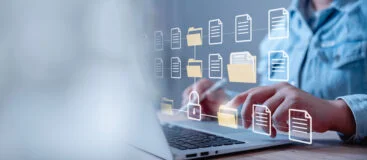Do you have a strategy for software asset management compliance? Today’s complex IT ecosystem requires a proactive approach to minimize compliance risk exposure by focusing on licenses and usage.
Understanding compliance risks in software management
Software asset management compliance, or SAM compliance, is a major concern of IT professionals as the number and location of apps multiply exponentially making it harder to manage—on-premises in the cloud, and mobile devices. Non-compliance is particularly risky for industries like finance, healthcare, and government, where regulatory requirements are stringent and fees for non-compliance can be steep.
Definition of compliance risks
Software compliance risks are defined as the threats and vulnerabilities that potentially arise from failing to adhere to legal, regulatory, and in-house standards and policies related to software licensing and usage. If left unattended, organizations can experience significant financial, legal, and even reputational consequences.
Common sources of compliance risks: legal and financial implications
The most common causes of software non-compliance include:
Licensing violations – using software without proper licenses, exceeding license limits, or misinterpreting licensing agreements
Regulatory non-compliance – not adhering to industry-specific regulations or standards, such as SOX in finance or FDA requirements in healthcare
Data protection non-compliance – failure to comply with data protection regulations, such as GDPR, HIPAA, or CCPA, when handling personal or sensitive data
In addition to fees and penalties directly related to non-compliance, imposed either by regulatory agencies or software vendors, costs can escalate to cover legal proceedings, such as attorney fees and settlement costs.
The role of SAM in identifying compliance risks
Definition and scope of software asset management for compliance
As discussed in our blog on Software Asset Management – An Overview, SAM programs are designed to identify and execute IT activities that span the life cycle of software applications, ranging from procurement to deployment, maintenance, utilization, all the way to disposal . An all-encompassing SAM program also addresses compliance issues, to make sure the enterprise pays attention to legal and regulatory requirements for software licensing and usage. This includes the following activities:
License management – ensuring appropriate licensing for all software in use
Usage monitoring – tracking software usage to ensure it aligns with the licensing agreements
Audits and reporting – preparing for and managing software audits conducted by vendors or regulatory bodies
Policy and procedures – developing, implementing, and enforcing in-house policies and procedures that ensure software compliance
Training – educating employees about SAM policies and the importance of compliance
Risk identification – identifying risks related to software non-compliance, such as financial penalties and legal issues
Security and data protection – ensuring software assets comply with security standards and regulations
How SAM helps in monitoring and managing software licenses
SAM programs provide IT organizations with a framework to monitor and manage their software licenses leveraging tools to track, optimize, and ensure compliance with licensing agreements. A top priority is to create a license inventory of all your software assets, including vendor contract terms and conditions, as well as purchase and expiration dates. Identifying unlicensed or unsupported software is key to mitigating your risk exposure. Vendor requirements must also be met, stipulating the most current and secure versions of software are used.
Automated SAM tools can help you manage software renewal by tracking license renewal dates and sending alerts to avoid lapses in coverage. Likewise, data from such tools can help assess software usage for leveraging better terms and prices with software vendors based on actual use. Finally, user authentication methods and/or built-in security are an essential part of SAM to prevent unauthorized software use and ensure license compliance.
Integration of SAM in overall compliance strategy
SAM practices and tools need to align with your organization’s broader compliance goals for optimal results. This involves integrating compliance systems with other IT management systems; mapping to industry-specific regulations; coordinating with enterprise-wide data privacy, security, and audits; establishing a governance structure for accountability and oversight; centralizing reports for a holistic view of the organization’s compliance status; defining KPIs to measure the effectiveness of SAM in supporting overall compliance objectives; and conducting regular awareness campaigns to keep SAM top of mind for all employees.
Mitigating compliance risks with SAM
A strong SAM Compliance program is needed to effectively mitigate software compliance risks by implementing regular audits, educating employees, and utilizing compliance management tools. Below are some specific strategies to follow.
Proactive risk identification
The days of reacting to risks after the fact are over. Organizations must pivot to a proactive mindset by identifying potential software compliance issues before they become problematic. Regular audits and continuous monitoring for compliance are two ways to identify whether risks exist within your IT landscape, so you can take corrective action. Employee training is recommended to inform workers about software usage policies and ensure adherence to licensing agreements.
Cost avoidance
The best strategy to avoid software non-compliance costs is putting SAM controls in place for better visibility. By balancing the number of software licenses with actual usage needs, you can optimize costs, maintain compliance, and reduce the administrative burden associated with software management. Automated tools can help track your asset inventory to avoid financial waste from both over-licensing and under-licensing.
Improved vendor relationships
Having a formalized SAM program can be instrumental in improving your software vendor relationships. Transparent practices concerning licenses and usage help build trust with new and existing vendors, which can be leveraged during purchasing or license renewal negotiations. For example, if you demonstrate full compliance with vendor licensing terms and conditions, you are better positioned to negotiate more favorable, cost-saving contract terms on behalf of your organization.
Challenges businesses face with compliance
In the digital age, licensing compliance presents daunting challenges to businesses as they struggle to consider and coordinate the many factors facing them. These factors include the following:
Complexity of managing diverse software environments
Diverse software environments—a mix of on-premises, cloud-based, and hybrid—introduce more complexity to IT management. This calls for a unified approach with a centralized compliance management system that drives standardization, scalability, security, and data integration. Advanced SAM tools are especially useful for real-time tracking and reporting on compliance across the various software environments. By leveraging the right tools and best practices, you can navigate the complexities and achieve efficient and effective software management.
Keeping up with evolving software licensing models
The myriads of software licensing models—ranging from software-as-a-service to try-before-you-buy—brings flexibility and financial benefits compared to traditional fixed-cost purchasing agreements. However, these fast-evolving options add another layer of complexity, as IT departments try to make the right choice for their user community. Again, advanced SAM tools with centralized databases can help you analyze usage data and aid in decision-making. Additionally, consulting with SAM compliance experts can increase your understanding of the latest software licensing models.
Ensuring accurate and up-to-date software usage data
Smart SAM tools offer automated discovery of all software installed on all devices across the organization. These tools continuously scan the network to detect new software and changes to existing software. In most cases, they also provide real-time monitoring of software usage to ensure that data is always current and reflects actual usage patterns. The generation of detailed reports on software usage, versions, and installations gives you a snapshot of all software assets at any given time.
Integrating SAM with other IT and business processes
Corporate operations are interconnected by virtue of today’s extensive reliance on automated processes. This creates a cohesive ecosystem where software assets are effectively managed, optimized, and aligned with organizational goals. The integration of SAM tools with other IT and business processes is critical for maximizing the value of software assets, ensuring compliance, and enhancing overall operational efficiency. Such integration requires collaboration between IT, finance, procurement, HR, and other departments to achieve an all-inclusive approach to software asset management.
Examples of data-driven processes to be integrated are:
- IT asset management (ITAM)
- Configuration management database (CMDB)
- IT service management (ITSM)
- Procurement and vendor management
- Financial management
- Compliance and audit management
- Security information and event management (SIEM)
- Human resources systems (assignment of role-based access)
- Project management
- Business intelligence and analytics
_____________________
Data Intensity’s Oracle License Management service helps you ensure full compliance of your Oracle software asset stack to minimize license costs and non-compliance risks.








